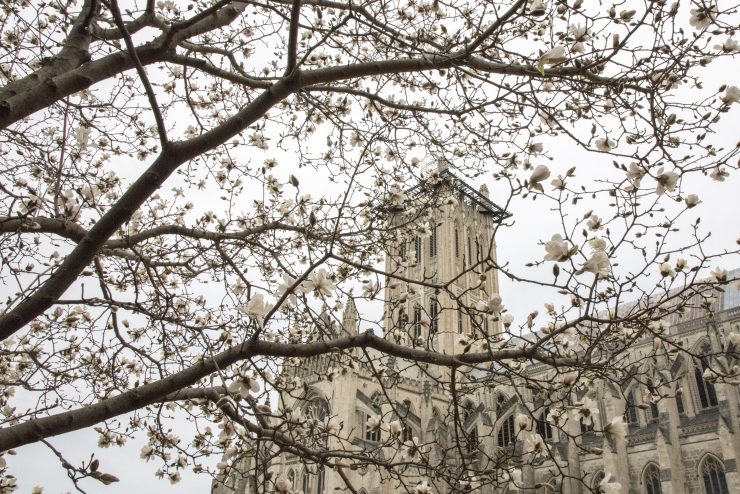The Righteous for the Unrighteous

John 11:45-53
Many of the Jews who had come with Mary and had seen what Jesus did, believed in him. But some of them went to the Pharisees and told them what he had done. So the chief priests and the Pharisees called a meeting of the council, and said, “What are we to do? This man is performing many signs. If we let him go on like this, everyone will believe in him, and the Romans will come and destroy both our holy place and our nation.” But one of them, Caiaphas, who was high priest that year, said to them, “You know nothing at all! You do not understand that it is better for you to have one man die for the people than to have the whole nation destroyed.” He did not say this on his own, but being high priest that year he prophesied that Jesus was about to die for the nation, and not for the nation only, but to gather into one the dispersed children of God. So from that day on they planned to put him to death.
The gospel appointed for this day recounts the deliberations and decision of some of the chief priests and Pharisees to put Jesus to death after his raising of Lazarus from the dead, preserving an ancient connection between that event and this Saturday preceding Palm Sunday. The immediate issue identified in the text appears to be that Jesus is attracting followers on account of the signs he had performed. The concept of signs is central to the way John presents his gospel message, featuring prominently in the first half of the text in such examples as the changing of water into wine at Cana (John 2:1-11), the feeding of the 5,000 (John 6:5-14), and the raising of Lazarus (John 11:1-44). As signs, they point beyond themselves to something of greater importance, namely Jesus’ identity as the incarnate Son of God. The chief priests and Pharisees recognize that these signs are indeed leading many to believe in Jesus and interpret that as a threat. It arouses their fear that the Romans, the imperial authorities with jurisdiction over their land, will come and destroy their people and their temple, and because of that they feel they must act. These religious leaders are motivated by fear, believing something must be done to stop Jesus before they suffer the consequences.
Decisions made solely based on fear rarely turn out to be wise or just ones, and this case is no exception. Reasoning that it is better to have one man die instead of an entire people, the chief priests and Pharisees set in motion their plan to put Jesus to death. Notice that they do not even bring an accusation against him. They implicitly acknowledge that he is an innocent man, yet they still condemn him to death.
The mystery at the heart of our faith, the mystery that we enter into in this week ahead, is that the righteous one, Jesus Christ, suffered and died for the unrighteous—all of us sinners (1 Peter 3:18). He was innocent, yet steadfast in walking the way of the cross, until lifted up from the earth on the wood of that cross, he draws all people to himself (John 12:32), ‘[gathering] into one the dispersed children of God’ (John 11:52). His outstretched arms reach out to us and call us from our scattered places to come to him, to come home. We who walk with him in these days ahead need only marvel at his love, give thanks for his surpassing goodness, and, at the end, join Lazarus as those who have been called forth from death to new life.
prayer
O Lord, in your goodness you bestow abundant graces on your elect: Look with favor, we entreat you, upon those who in these Lenten days are being prepared for Holy Baptism, and grant them the help of your protection; through Jesus Christ your Son our Lord, who lives and reigns with you and the Holy Spirit, one God, for ever and ever. Amen.
(Lesser Feasts and Fasts, 2006, p. 61)
Daily Lenten meditations each have a companion morning prayer video offered by the same clergy. View the YouTube playlist to find this meditation’s companion video, or to watch others.